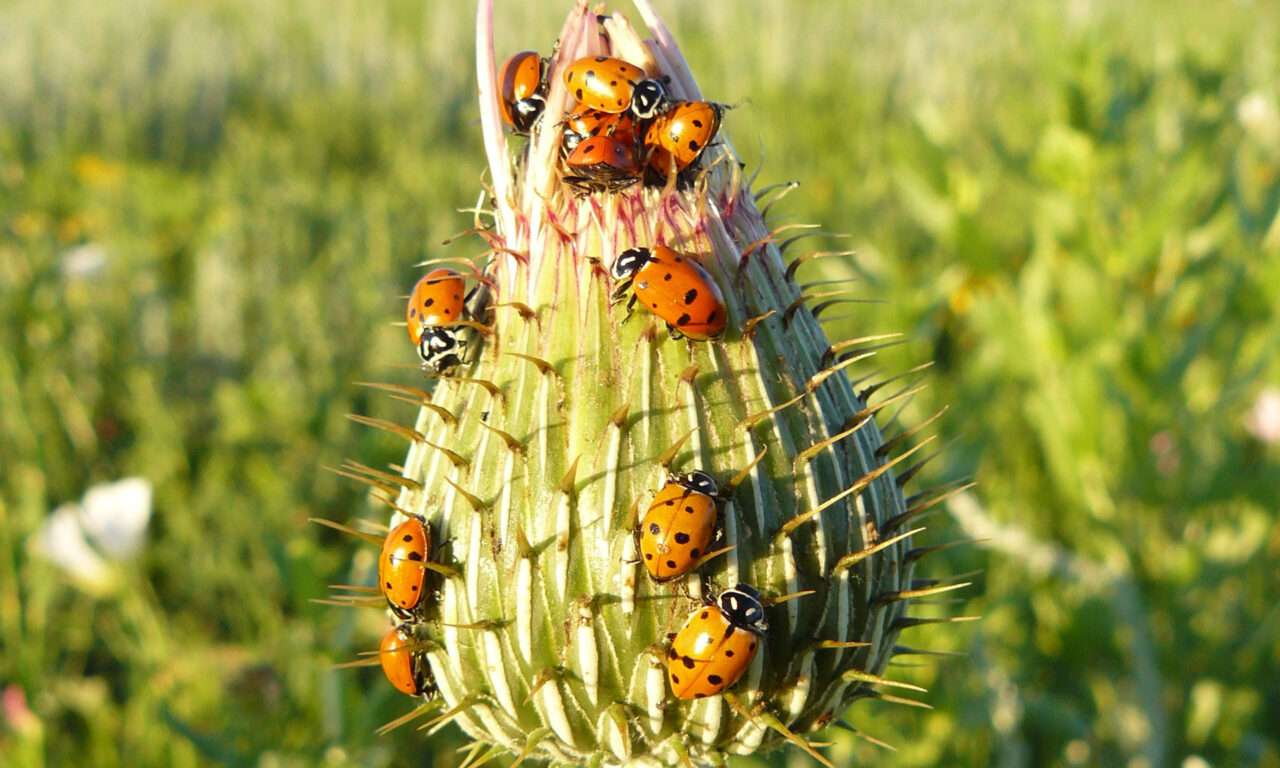Many of our winter narratives about animals involve creatures like hibernating bears or migrating birds. We tend not to think too much about creepy crawly animals until they return in great numbers come springtime. How do these creatures survive the harsh conditions of winter?
Insects have diverse strategies for ensuring survival. Typically, only one of the life stages (egg, larva, pupa, or adult) is adapted to overwinter—starting the cycle back up again in spring. Most hibernate in their chosen form, and many take advantage of natural antifreeze chemicals in their bodies.
Overwintering Eggs
Insects that overwinter as eggs will often lay these eggs below ground, under leaf litter, or inside the stems and nuts of plants. These placements provide insulation for the eggs, and the addition of snow on top increases that insulation through the coldest months. The tent caterpillar moth lays its eggs on the stem of a tree or shrub. The eggs are surrounded by foam, which hardens, to attach them to this future food source. Although they remain fairly open to the elements, the eggs contain glycerol (a chemical used in car antifreeze) and remain viable until spring when the glycerol is released and larva emerges.
Another strategy is to overwinter as a larva, like the woolly bear caterpillars. Legend has it that these tiger moth larvae can be used to predict the length and severity of the coming winter. In reality, they change color as they molt, becoming less black and redder with age. When winter starts to set in, they burrow under the leaf litter and can survive unfrozen up to 22 degrees below 0, Fahrenheit, thanks to the glycerol and sorbitol in their bodies and the slow process of supercooling.
Surviving Adults
Other insects, like the mourning cloak butterflies, snow fleas, and convergent ladybugs survive winter as adults.
Mourning cloak butterflies are the first we spot in early spring feeding on tree sap, as there aren’t enough flowers in bloom to sustain them. You may even see them emerge on a sunny day in late winter. They are the first butterflies on the scene because they survived the entire winter inside hollow trees and other hidey holes. These amazing butterflies can live up to 10 months. Antifreeze in their bodies helps them to survive, and they also bulk up by feeding in the fall after resting through the summer months.
Snow fleas aren’t actually fleas at all—they aren’t even insects. They are a type of springtail—hexapods that have been around since before dinosaurs. They look like tiny jumping bits of dust or ash on the surface of snow. Their dark color keeps them camouflaged the rest of the year when they hang out in the leaf litter—decomposing organic material. On sunny winter days, they come up to the surface to sun themselves or look for mates.
Convergent ladybugs gather in the thousands to overwinter all together. (Their name does not come from this behavior but rather from the two white lines found on their bodies.) These little beetles fatten up by consuming lots of pollen and then blow up into the mountains to aggregation spots. When massed together their warning colors and scents ward off many predators. Humans, however, take advantage of these massive gatherings to collect these predators for sale at garden centers as natural pest control. Ladybugs enter diapause, a state similar to hibernation, to wait out the inhospitable conditions of winter.
Insects (and their arthropod relatives) may be tiny, but they are capable of incredible feats of survival. Each species has found a way to ensure the generations cross through the winter months to find spring on the other side.


